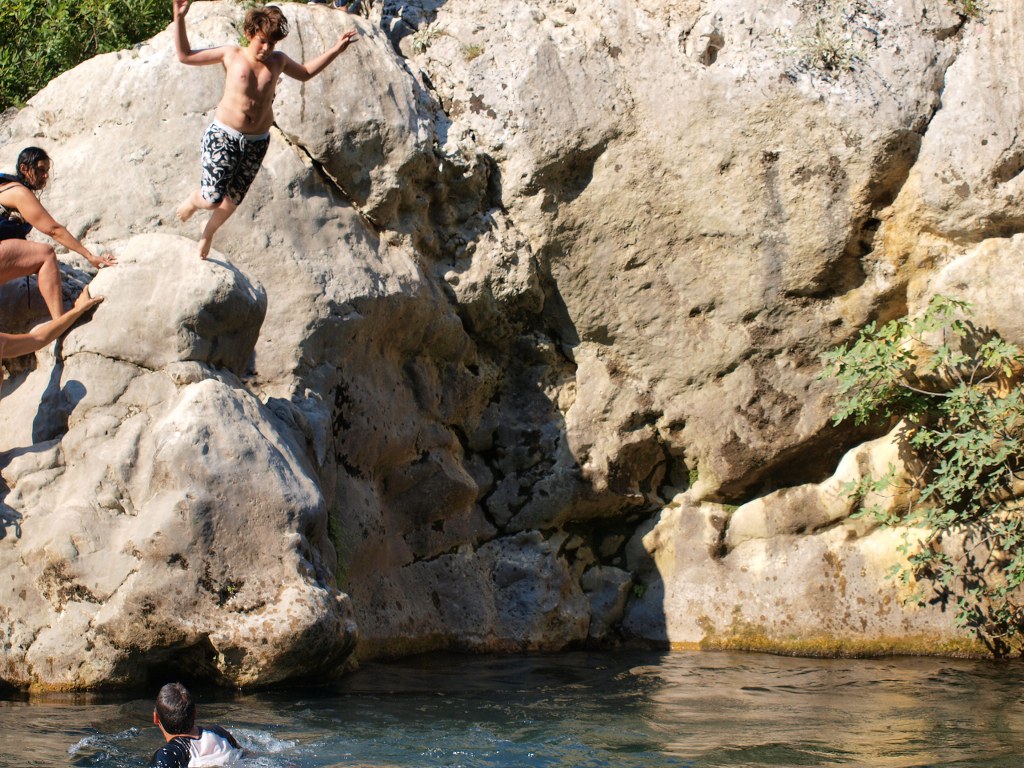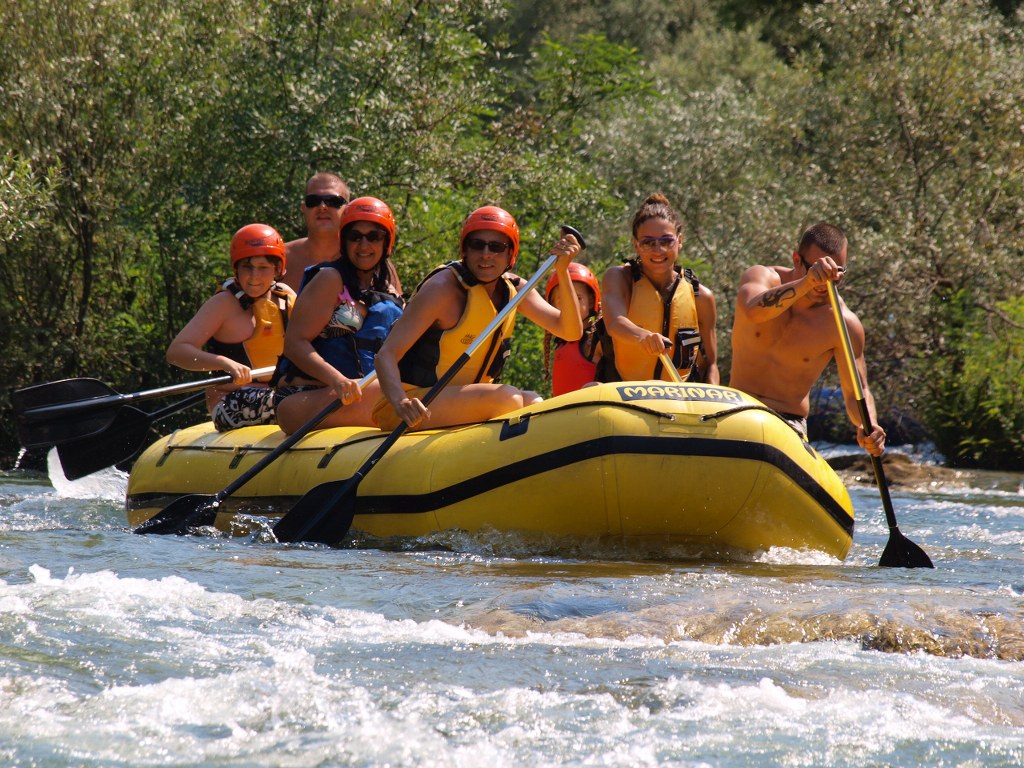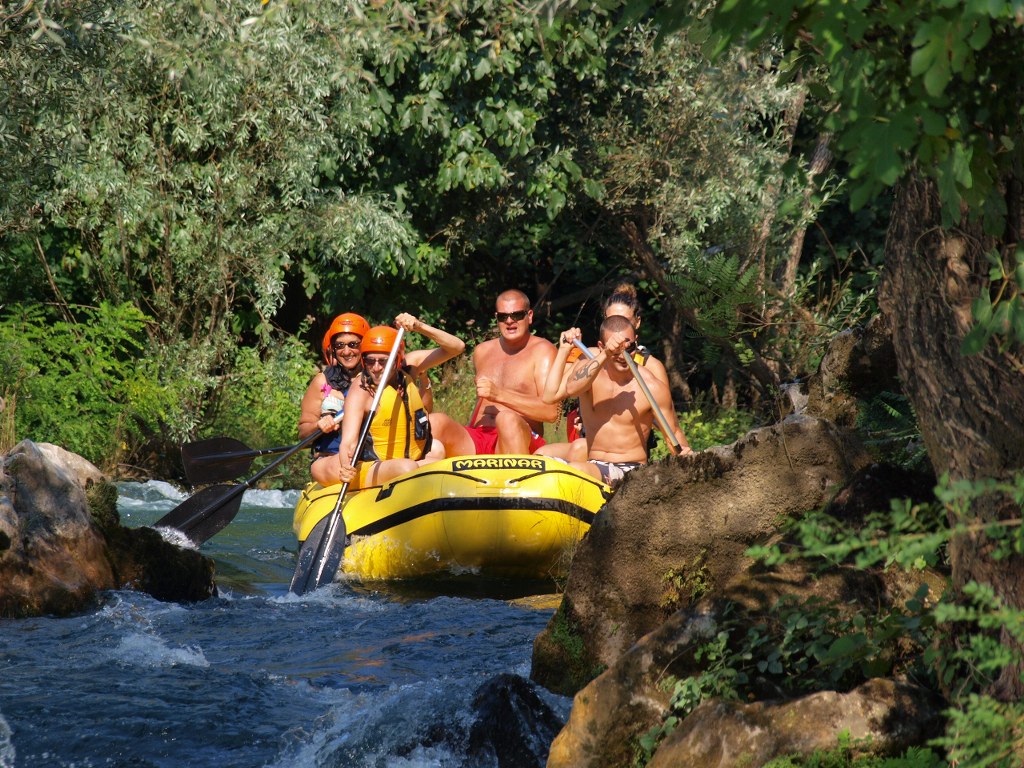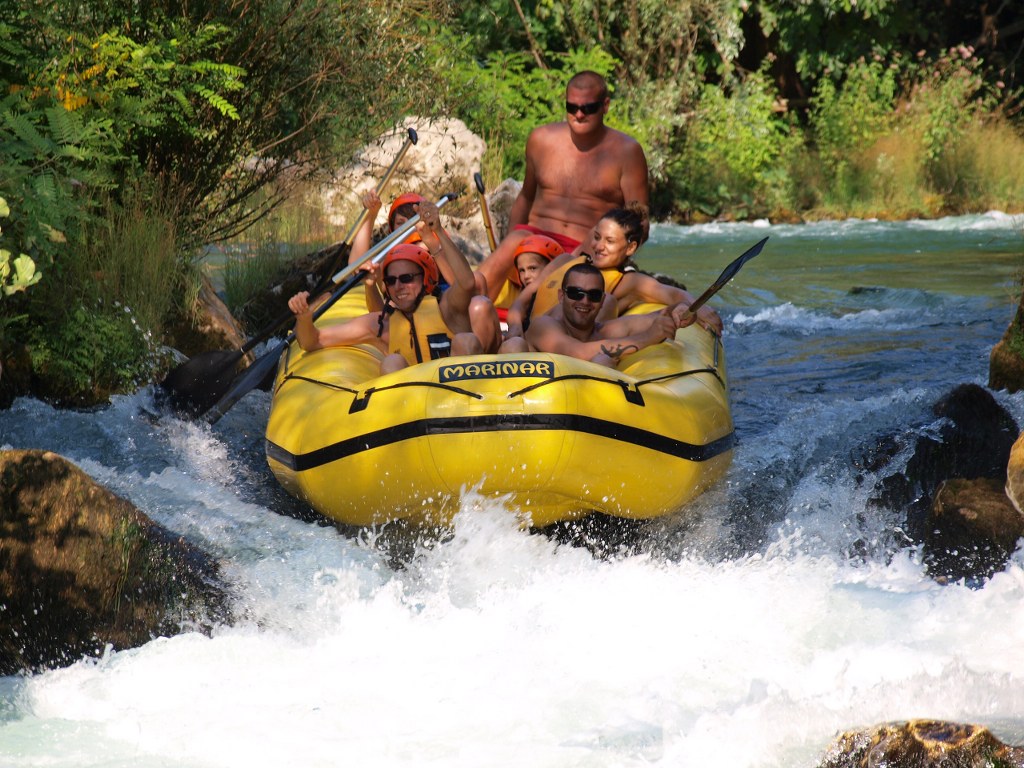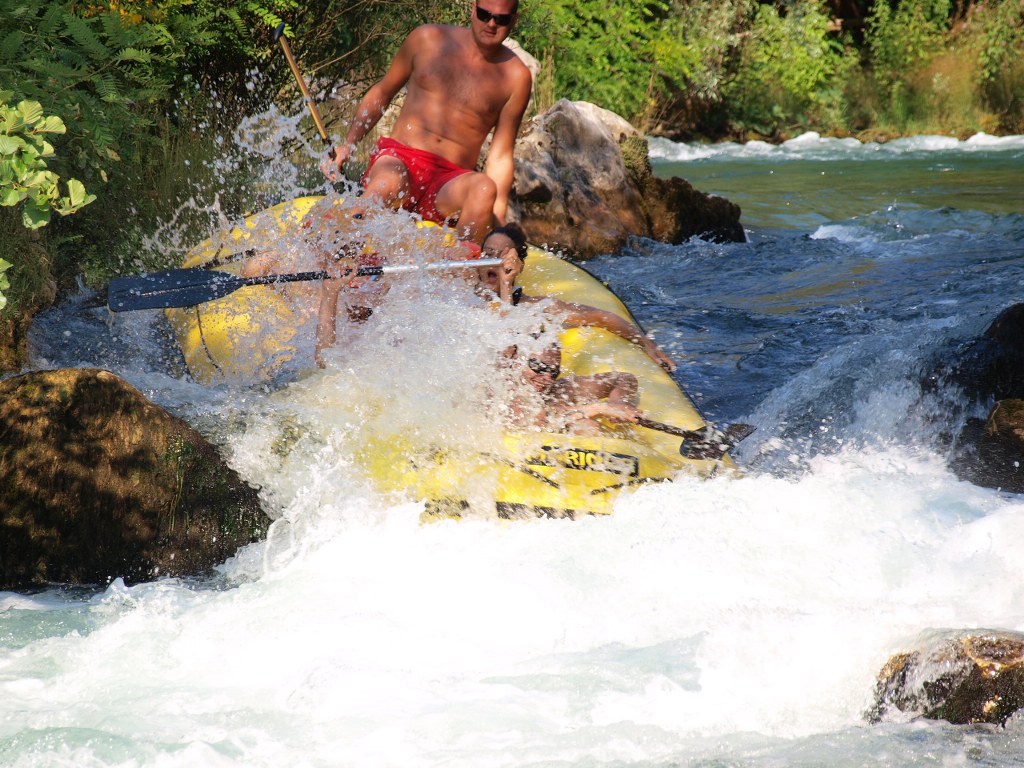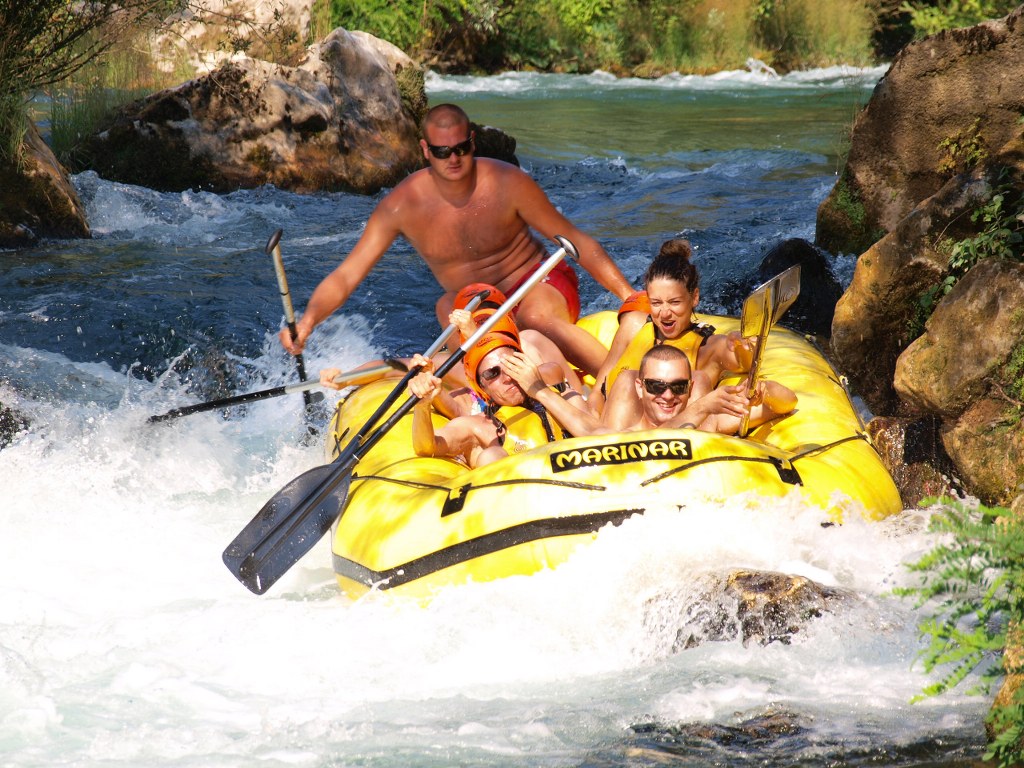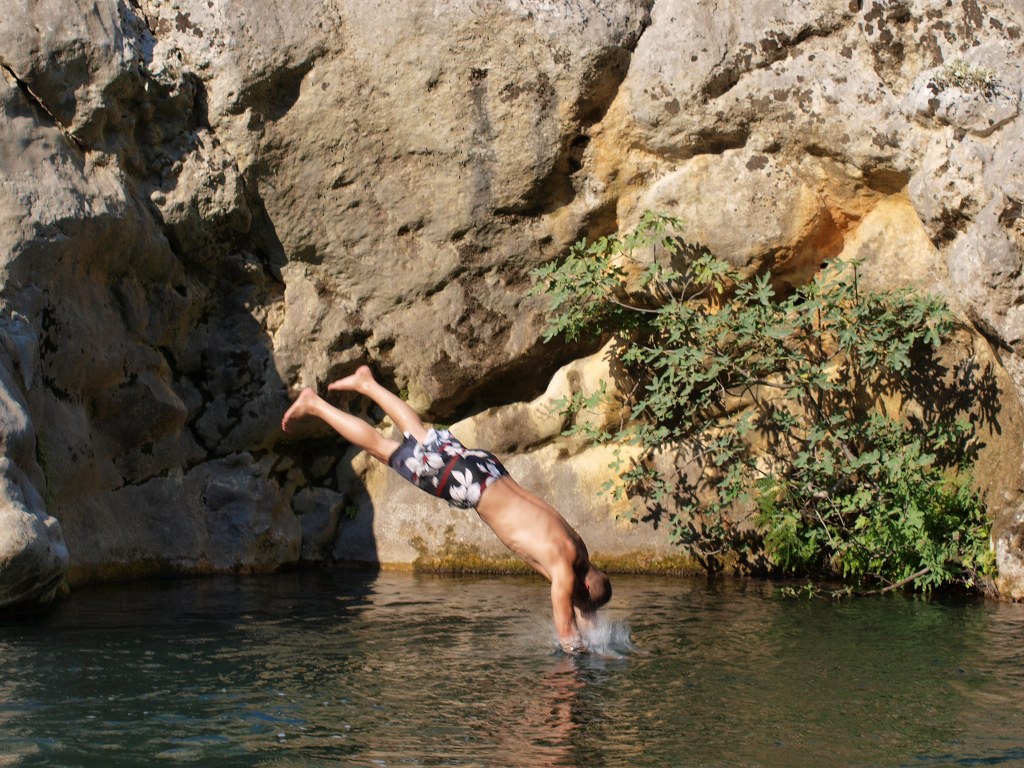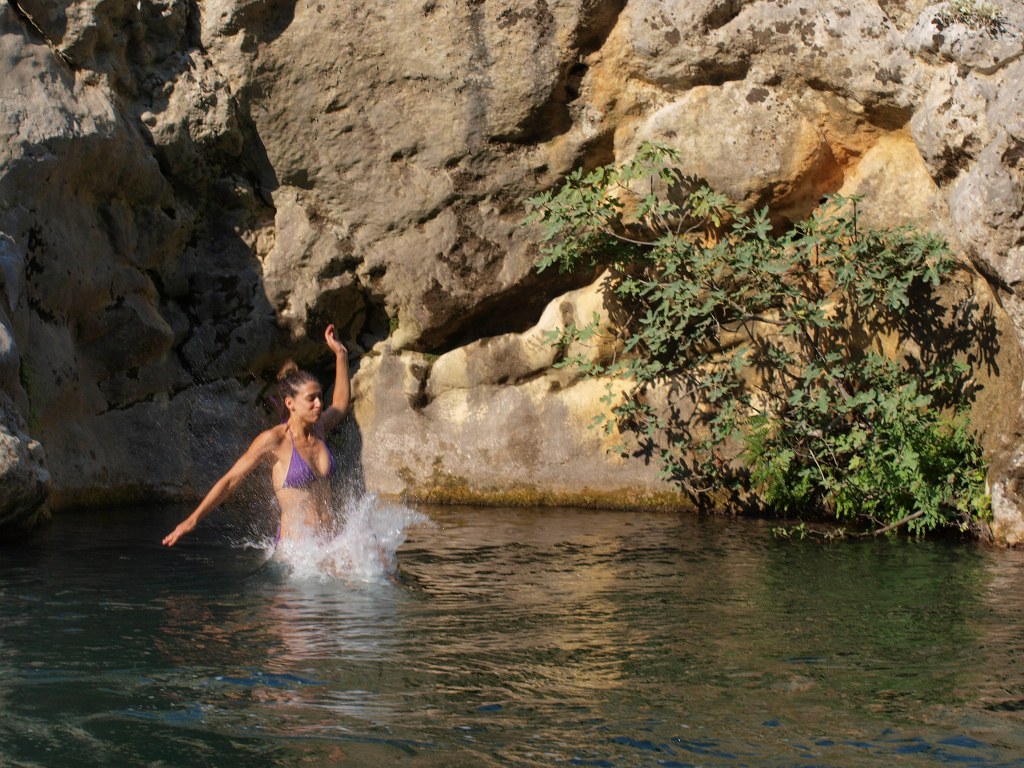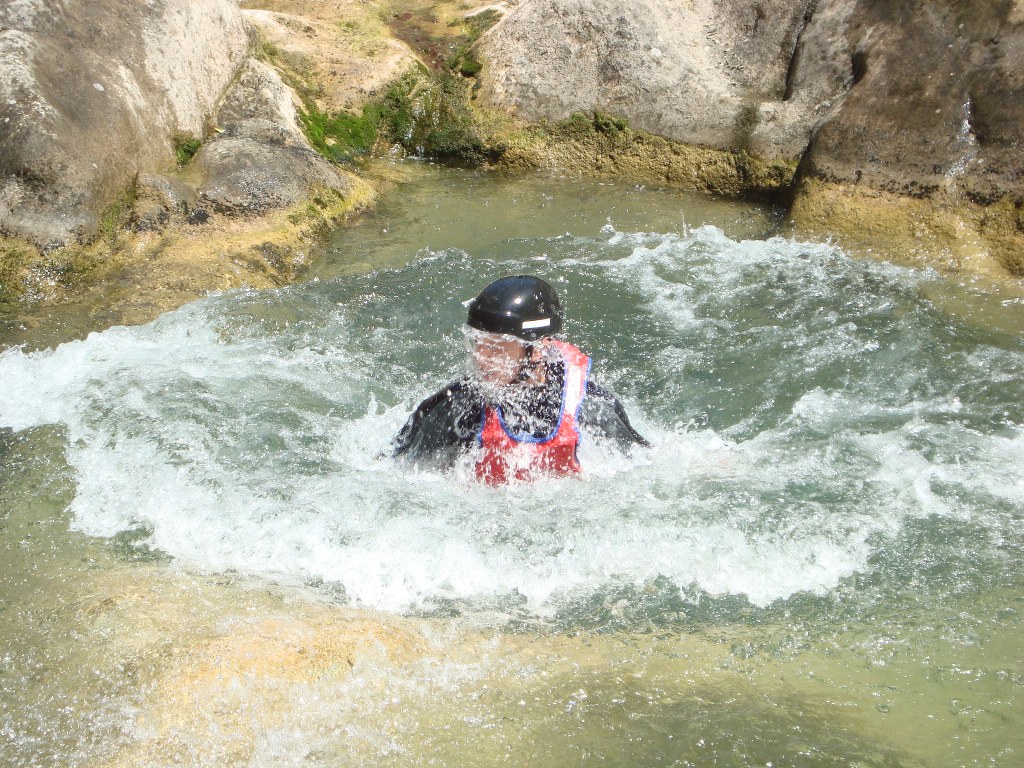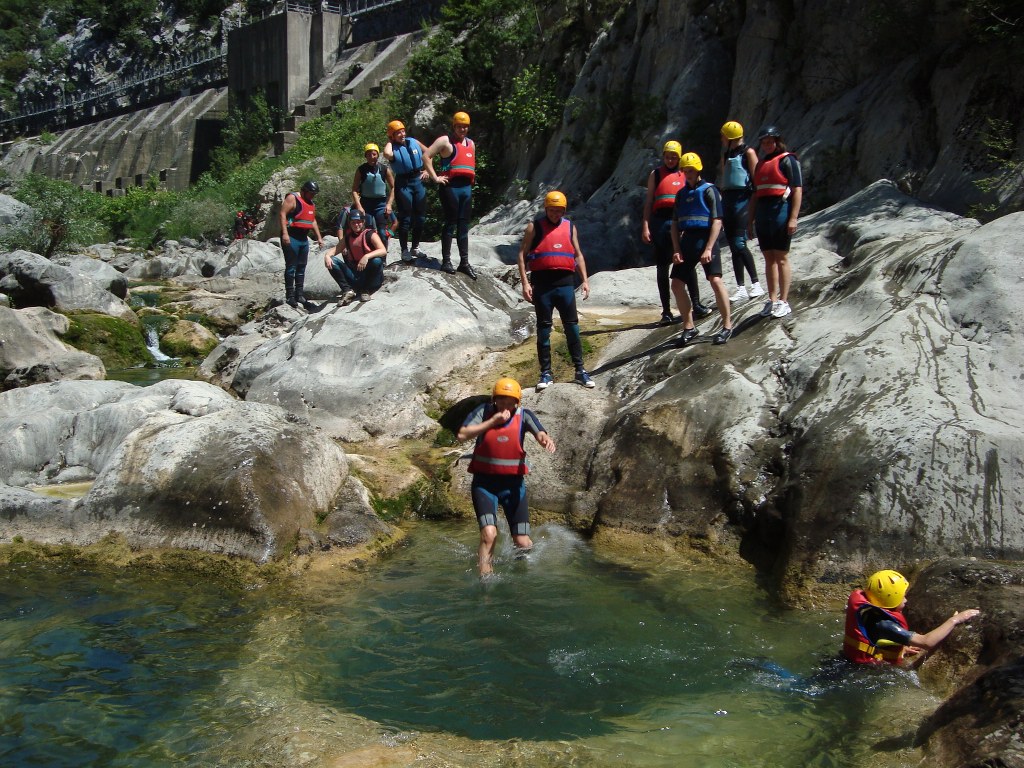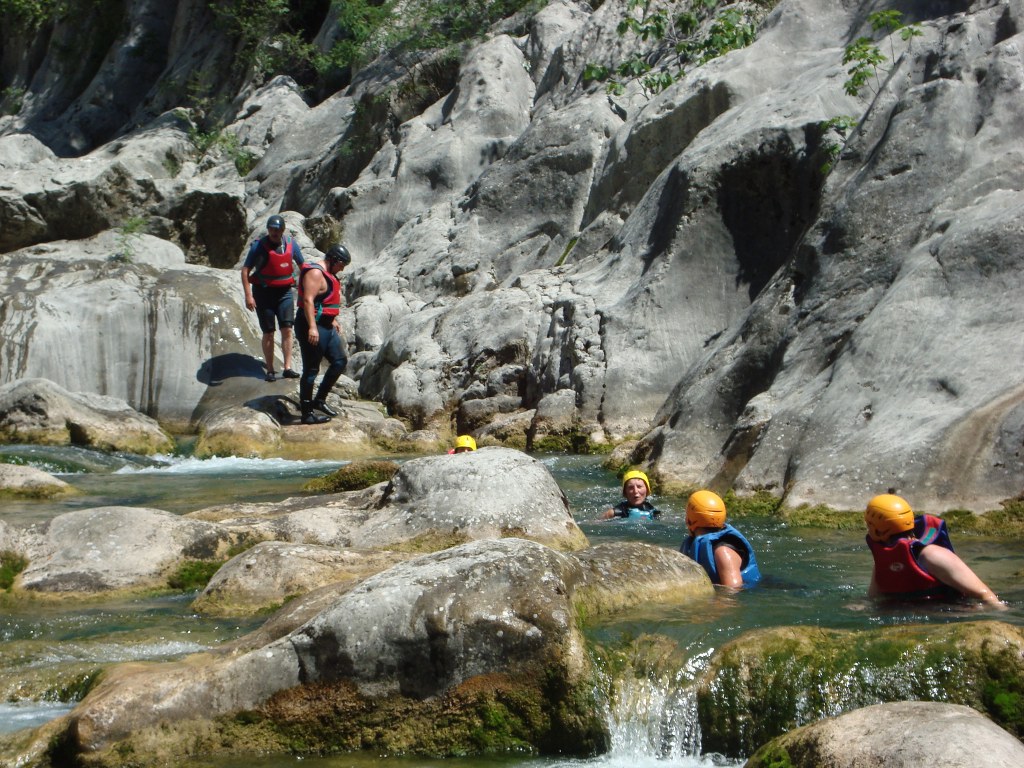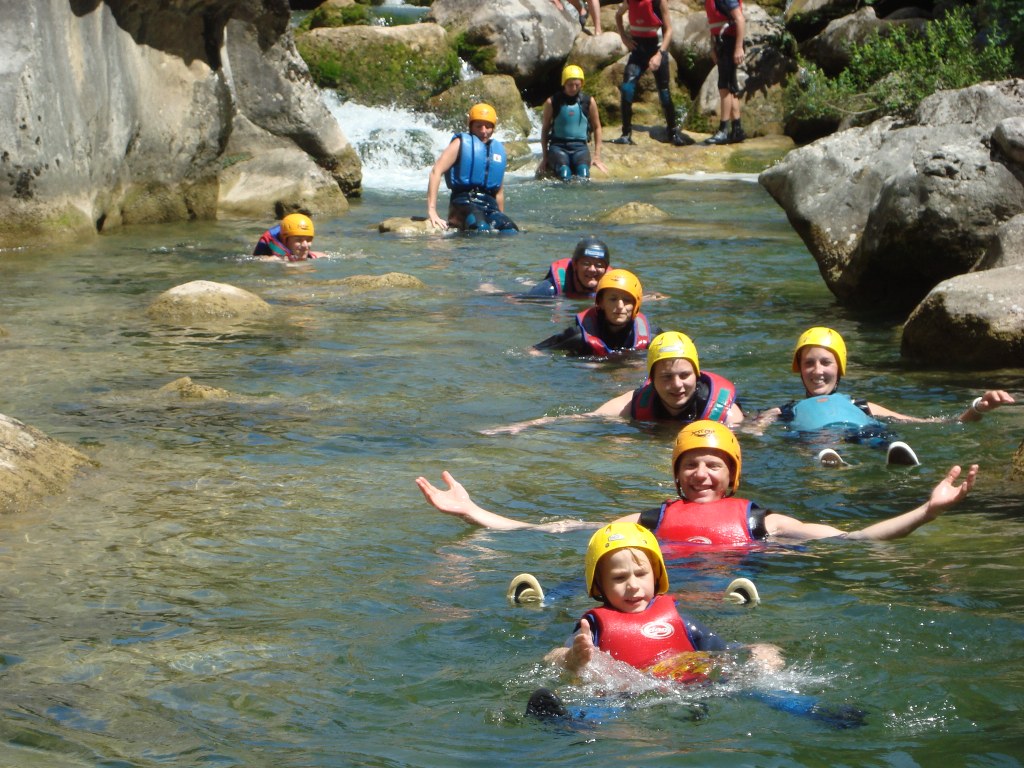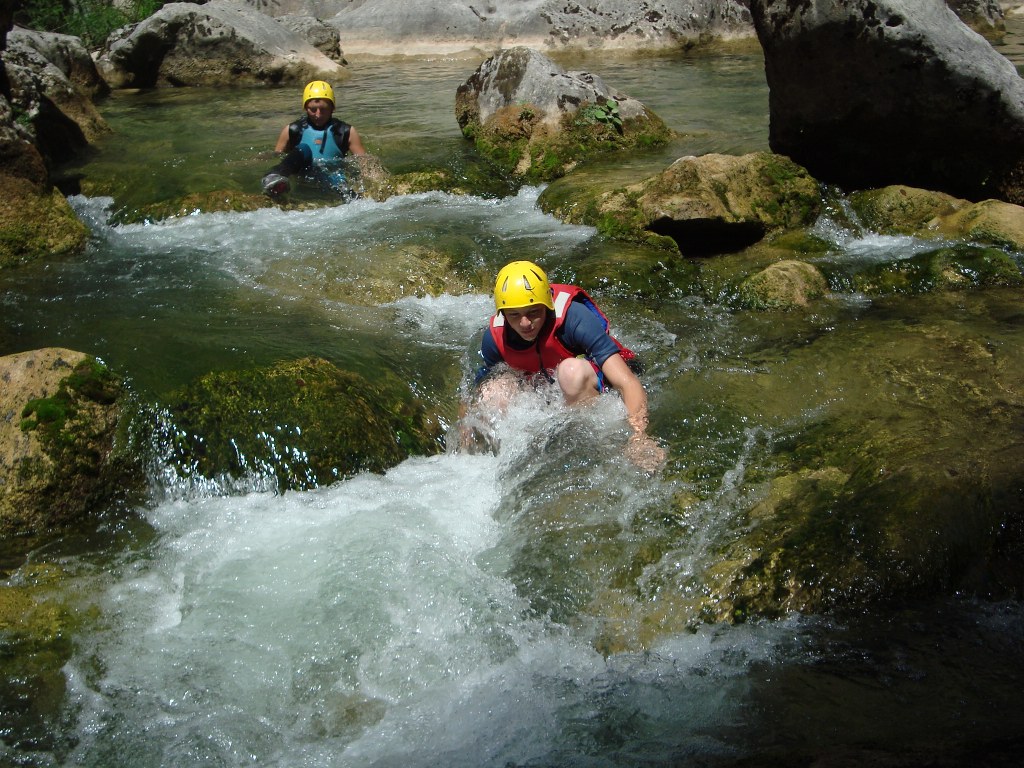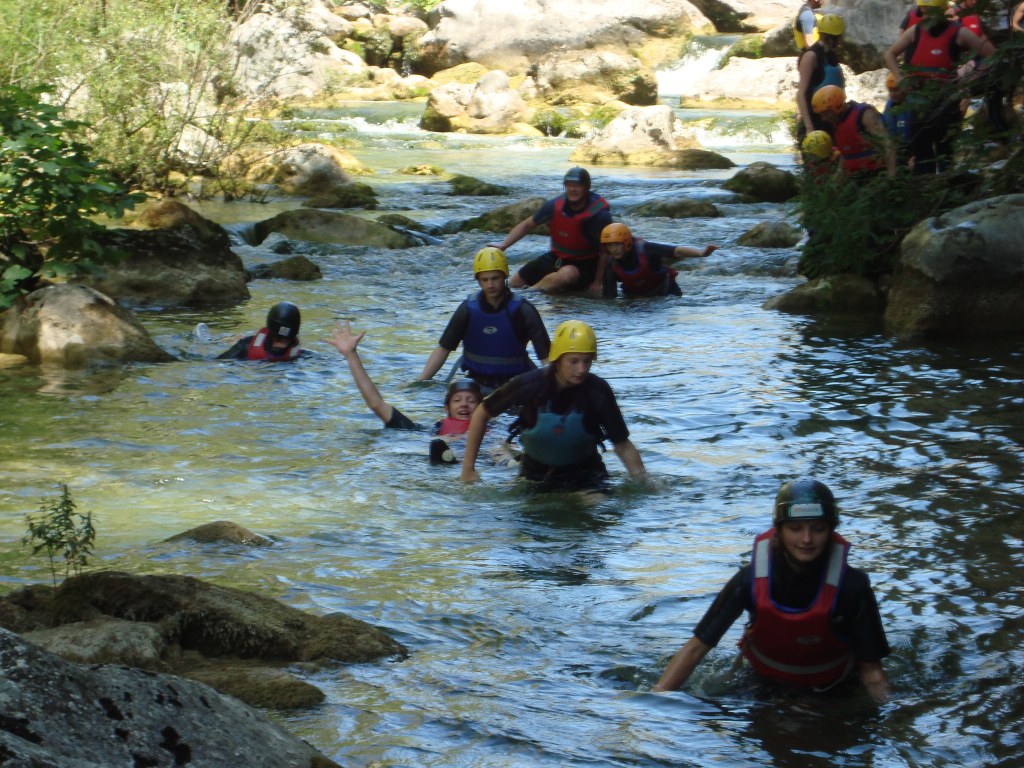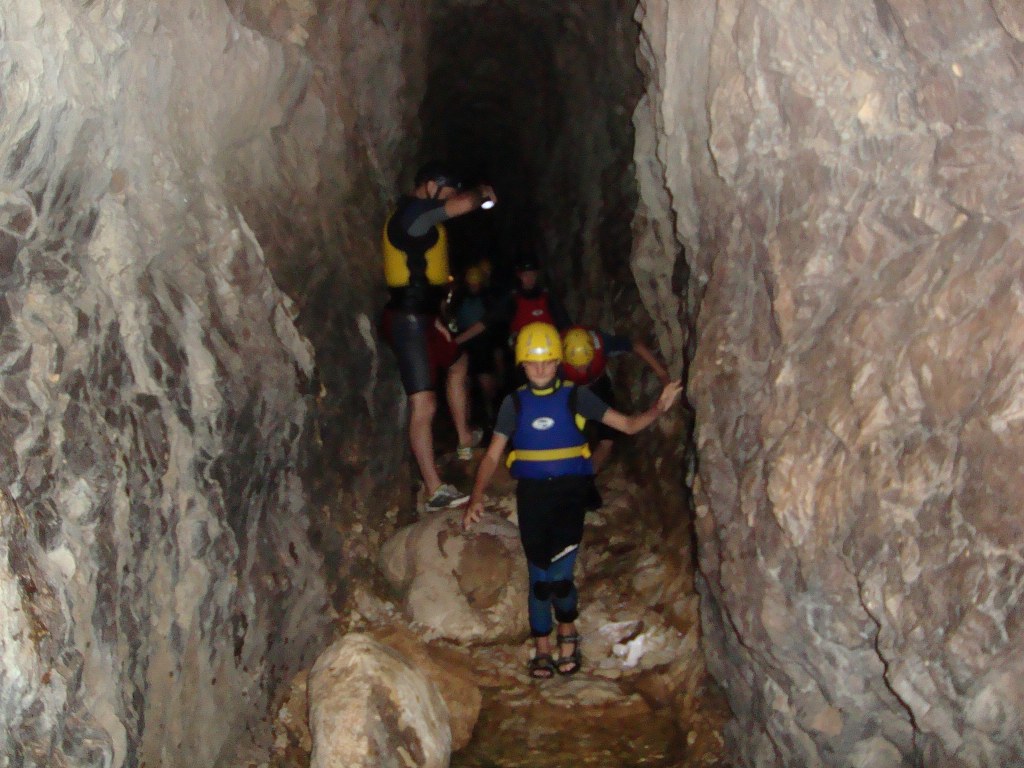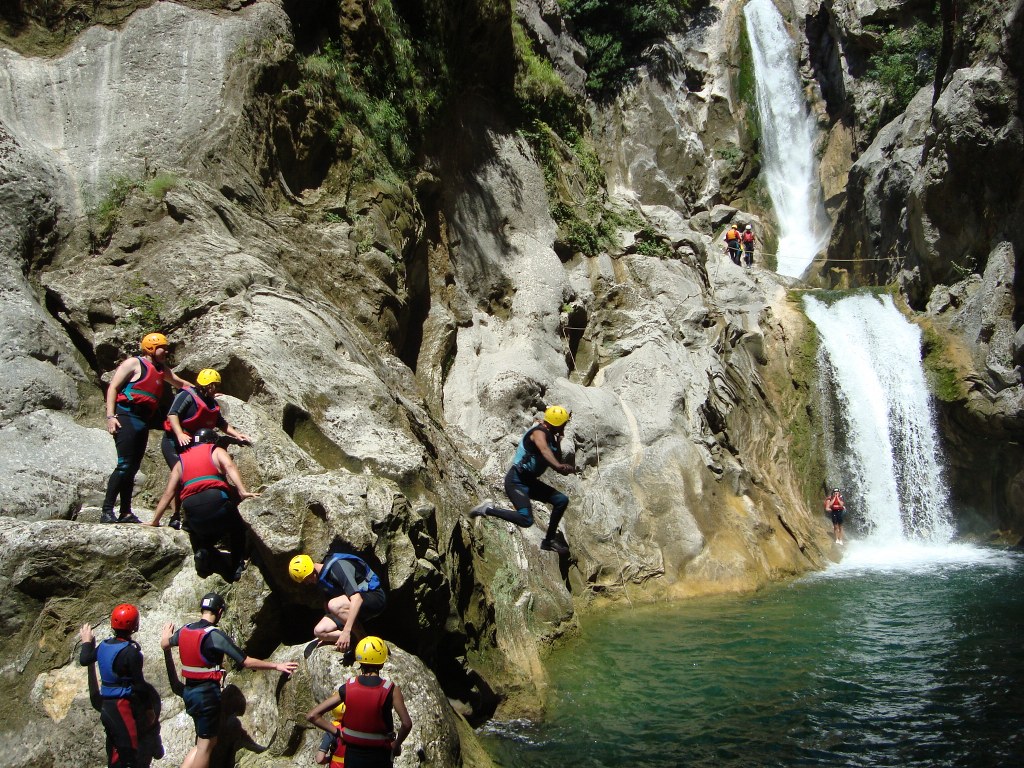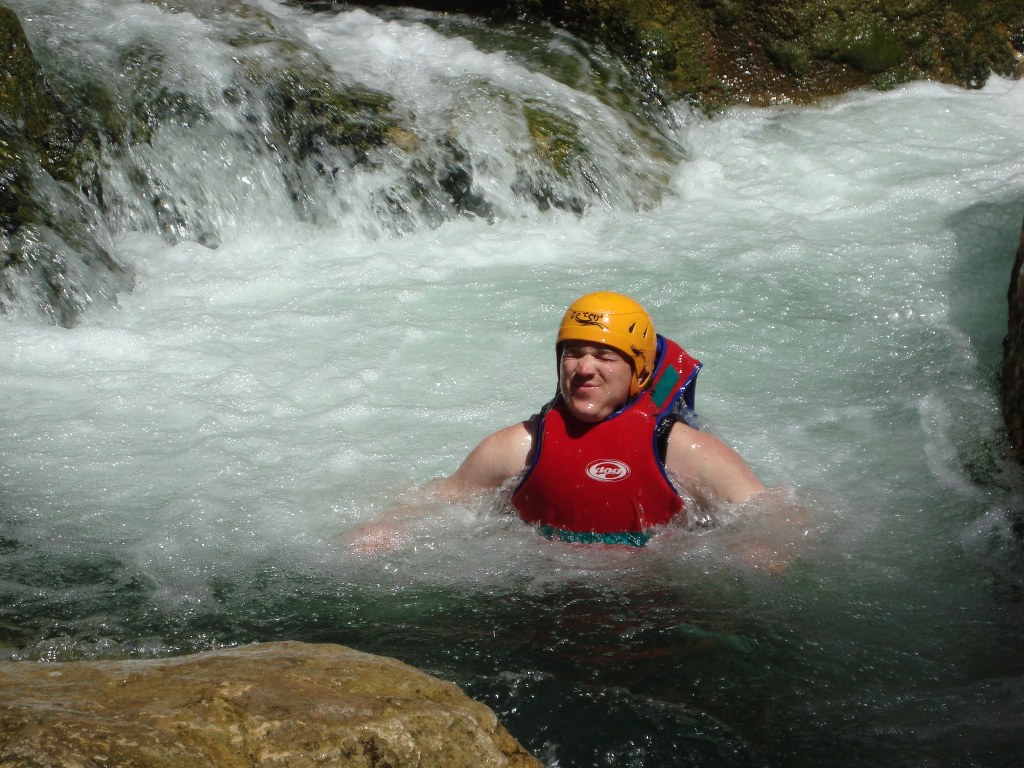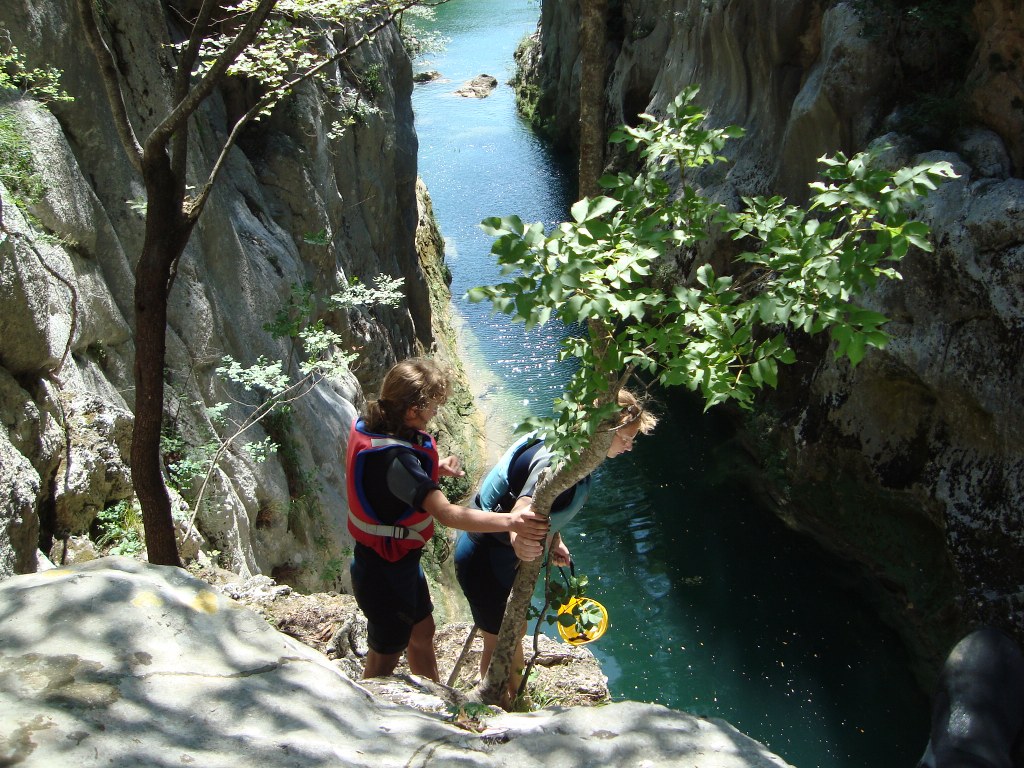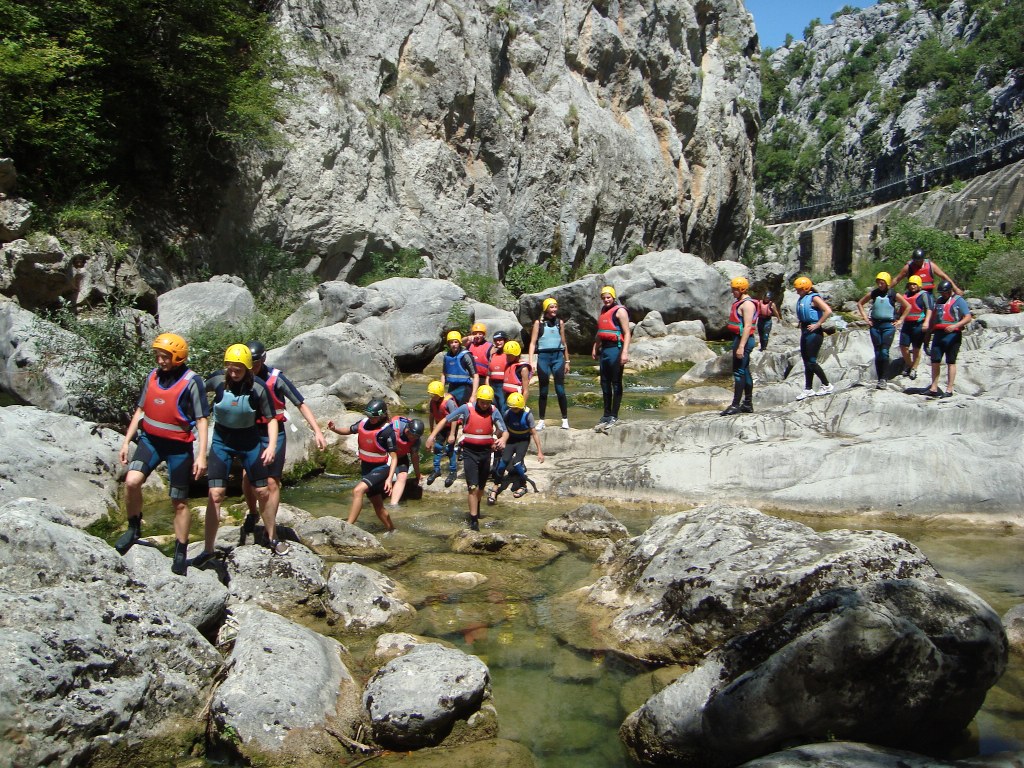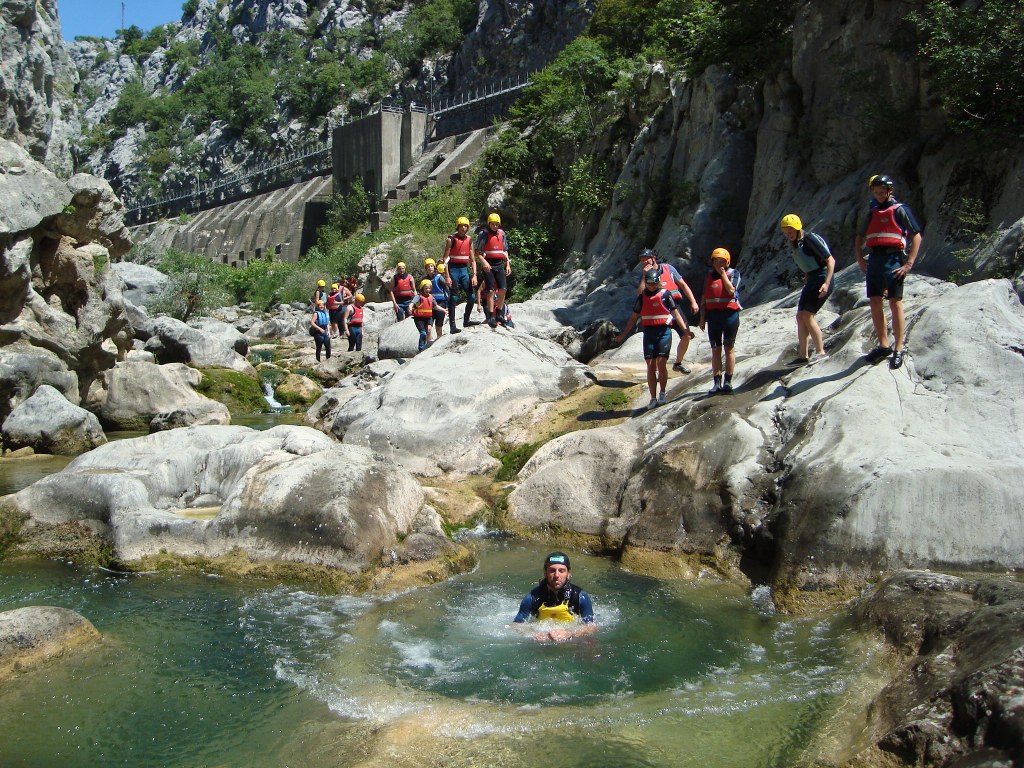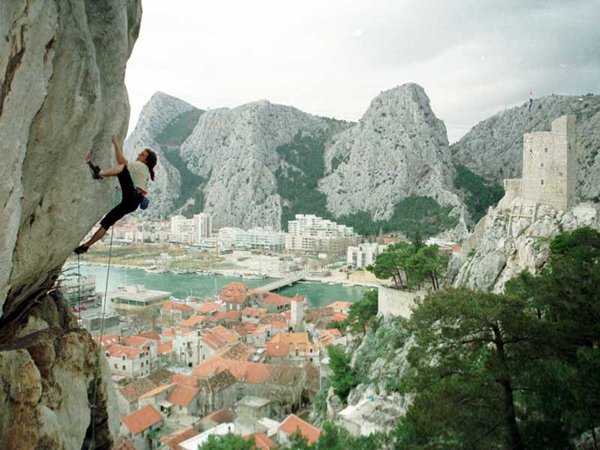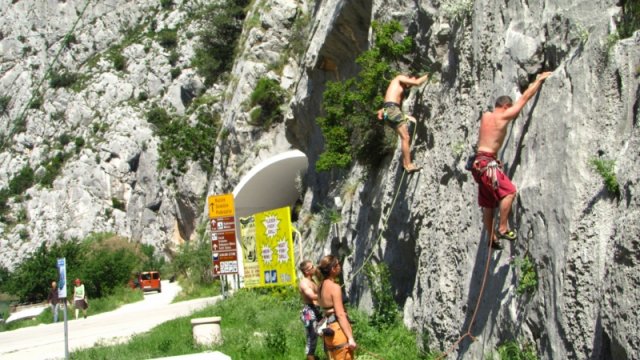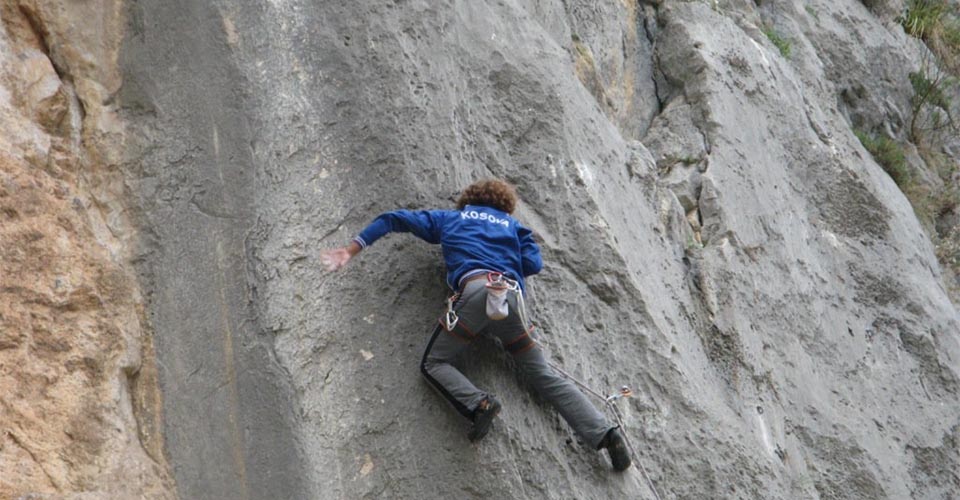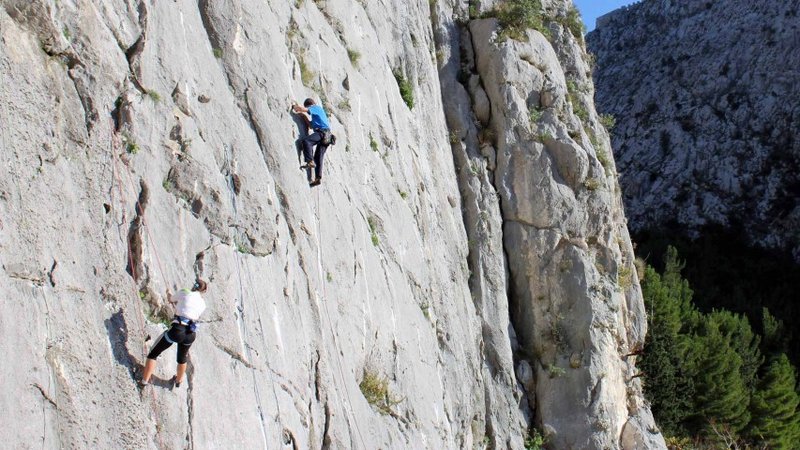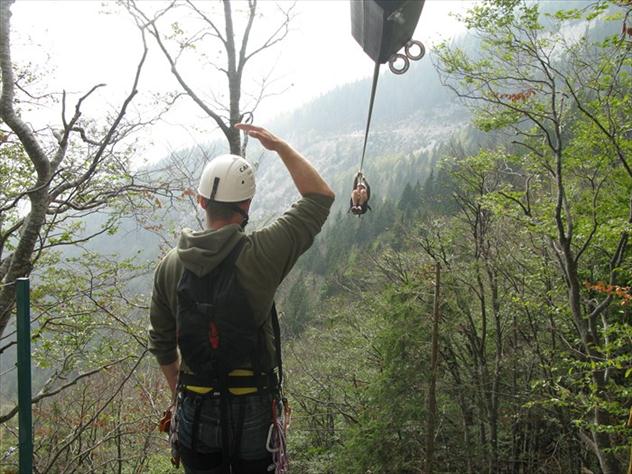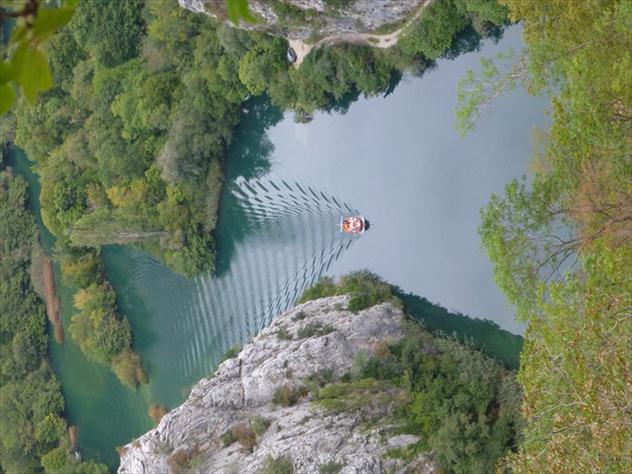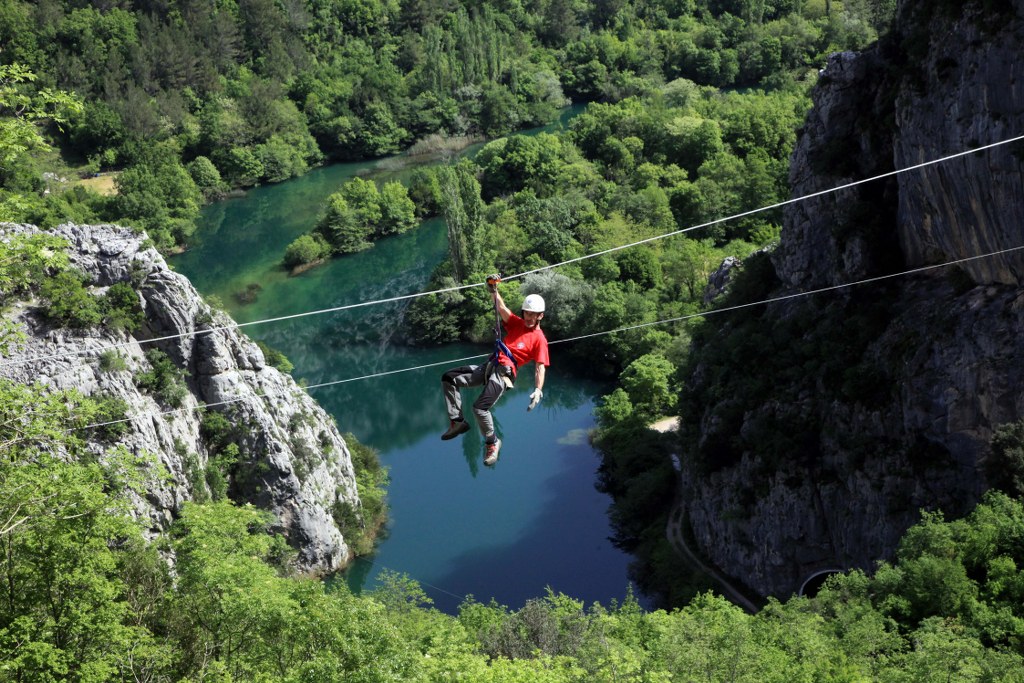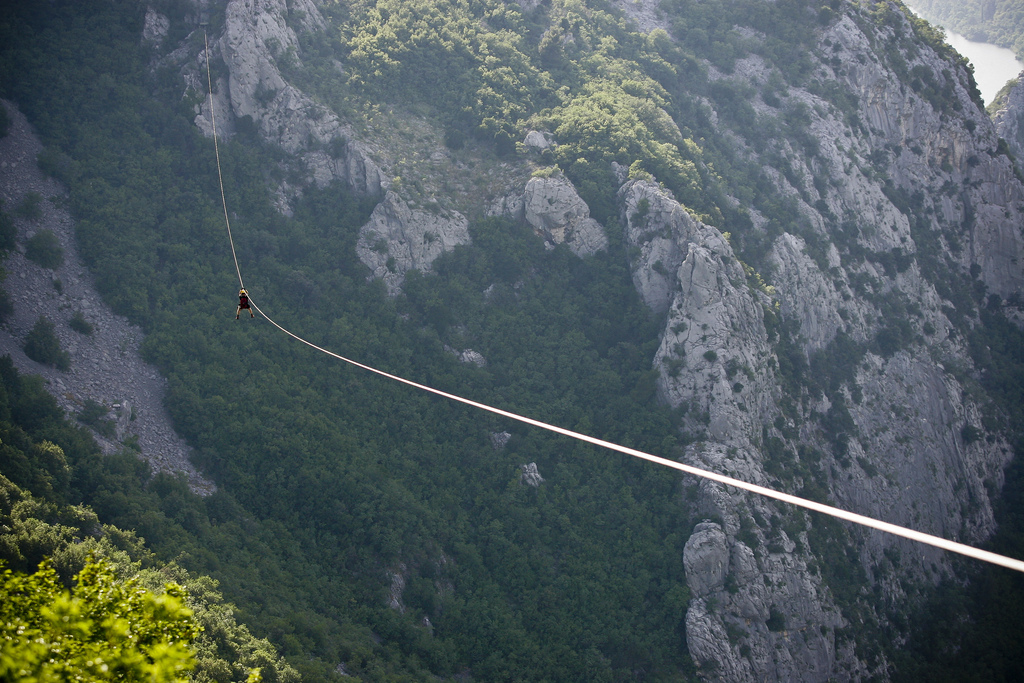Rafting or white water rafting is the challenging recreational outdoor activity of using an inflatable raft to navigatea river or other bodies of water. This is usually done on white water or different degrees of rough water, in order to thrill and excite the raft passengers. The development of this activity as a leisure sport has become popular since the mid-1970s. It is considered an extreme sport, as it can be dangerous
Canyoning is traveling in canyons using a variety of techniques that may include other outdoor activities such as walking, scrambling, climbing, jumping, abseiling (rapelling), and/or swimming.
Canyoning is frequently done in remote and rugged settings and often requires navigational, route-finding and other wilderness travel skills.
Canyons that are ideal for canyoning are often cut into the bedrock stone, forming narrow gorges with numerous drops, beautifully sculpted walls, and sometimes spectacular waterfalls. Most canyons are cut into limestone, sandstone, granite or basalt, though other rock types are found. Canyons can be very easy or extremely difficult, though emphasis in the sport is usually on aesthetics and fun rather than pure difficulty. A wide variety of canyoning routes are found throughout the world, and canyoning is enjoyed by people of all ages and skill levels.
Canyoning gear includes climbing hardware, static ropes, helmets, wetsuits, and specially designed shoes, packs, and rope bags. While canyoners have used and adapted climbing, hiking, and river running gear for years, more and more specialized gear is invented and manufactured as canyoning popularity increases.
Free climbing is a specific rock climbing term that refers to climbs in which climbers do not employ climbing protection such as ropes, tri-cams, nuts, and other climbing equipment to aid in ascending the climb, although, such equipment may be used to protect against injury during falls. The term free climbing originally meant “free from aid”.[1] Free climbing includes solo climbing, traditional climbing, sport climbing and bouldering. In contrast, in aid climbing, climbing equipment is used to assist the climber in ascending the climb and can include a means for pulling the climber upward or providing points where the climber can stand on equipment to assist in the climb.
A zip-line consists of a pulley suspended on a cable, usually made of stainless steel, mounted on anincline. It is designed to enable a user propelled by gravity to travel from the top to the bottom of the inclined cable by holding on to, or attaching to, the freely moving pulley. Zip-lines come in many forms, most often used as a means of entertainment. They may be short and low, intended for child’s play and found on some playgrounds. Longer and higher rides are often used as a means of accessing remote areas, such as a rainforest canopy. Zip line tours are becoming popular vacation activities, found at outdoor adventure camps or upscale resorts, where they may be an element on a larger challenge or ropes course.

